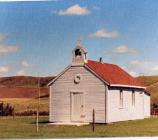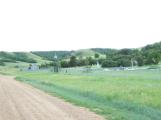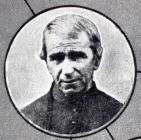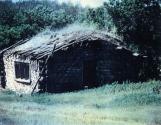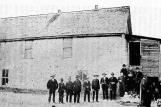8
Some First Nations of the area were: Assiniboine (Nakota), Snake Indian Nation, Saulteaux, Cree, Sioux, and Blackfoot.10
Reserve Church in Wood Mountain areaA little Mission Chapel was built in 1871 by Fr. P. Lestanc, Oblate Missionary, four miles from where Wood Mountain now stands.
The congregation was made up of 100 Métis families who were encamped in this area while they hunted and trapped for furs.
12
Reserve Cemetery at Wood MountainThe Cross was constructed with local trees and painted.
14
MétisBefore the year 1870, several Métis of Scottish, English and French ancestry left the shores of the Red River. Their relationship with the Government of Canada was strained; immigration from the east was threatening to squeeze them out. Further more, the buffalo were becoming scarce which their economy was based upon in the Red River area.
A certain number of families moved to South Central Saskatchewan to settle in Coulee Chapelle. (Coulee Chapelle was situated in the present St. Victor parish a few miles from Willow Bunch. [A coulee is a land depression made by water erosion - an ancient river bed close to Montague Lake]).
Father Decorby arrived in the area in 1868 from France. Several years later Father Lestanc succeeded the former priest. He was from Quimper, France and was fluent in French, English, Cree and Ojibwa.
